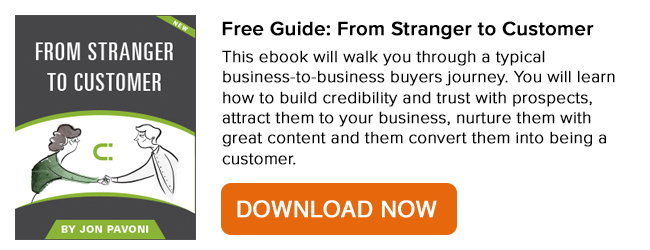 As B2B marketers, we all feed on a steady diet of e-books, whitepapers and blog posts. In this post, I want to look at what makes an e-book great and additionally showcase a couple of companies that are exemplifying these factors in their own e-books.
As B2B marketers, we all feed on a steady diet of e-books, whitepapers and blog posts. In this post, I want to look at what makes an e-book great and additionally showcase a couple of companies that are exemplifying these factors in their own e-books.
I have boiled my findings down to five essentials, and I have referenced an e-book that I think best demonstrates each particular best practice.
1) Remarkable Content
The first and most obvious answer to what makes a great ebook is insightful, engaging and educational content. For an e-book to garner attention, generate leads and move prospects deeper into the sales funnel, it needs to educate and inform. You can do this by providing research on new industry statistics, trends and metrics.
Additionally, tell stories from your own experiences or tell your customers stories. These insightful research metrics will help to elevate you and your company to a trusted advisor or thought leadership position in your industry.
A company that I think does a great job of putting out great educational content is Salesforce.com. Their e-book SEO Experts Reveal The Truth About Marketing is an extremely helpful resource. It helps readers better understand the future of search engine optimization, the relationship of SEO and Social Media, and how content marketing has changed SEO.

2) Design
The second thing that makes a sexy e-book is great design. Let’s just be honest with each other; we all judge and e-book by its cover, so we should invest in great design! Here are some of the design elements that we should be mindful of when we are creating an e-book.
- Fonts: Choosing the font for your e-book might seem like a minor issue. However, the correct typography choice can either enhance or detract from your overall message. So take some focused time to think through the typography that you use for your e-book, then consistently use it for all future e-books.
- Colors: The colors that you choose for your e-book should adhere to your company's style guide. Again, this e-book is going to be an integral component of your content library, so it needs to be consistent with your other marketing materials and assets.
- Page Layout: Finally, the last key component of a well-designed e-book is page layout. Make sure that you are making the content easy for your reader to consume. Use headers, sub-headers, bullet points, short paragraphs and font-weight variation for emphasis. This will enhance your readers’ overall experience and will effectively break up intimidatingly long content sections.
A company that does a great job from a design perspective is Velocity in their B2B Marketing Manifesto. Every design element in the e-book--the typography, the color choices, the layout and the illustrations--support and enhance the manifesto’s message.
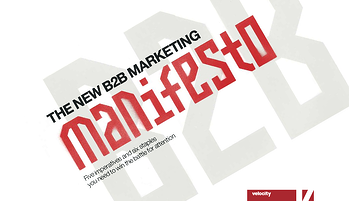
3) Unique Format
One item that will definitely help your e-book stand out and differentiate itself is a unique format. As most of us know, when we download an e-book, we are getting a downloadable PDF document that we can then view in Adobe Reader. However, what if there was a different and more unique way for you to deliver e-book content to your readers?
Well, good news: there is. Have you ever heard of flipbooks? Flipbooks are a way to make your e-book actually look like a book. My favorite tool for creating flipbooks is Uberflip. Check it out when you have time. Flipbooks will turn any plain pdf document into a real e-book, meaning your readers will be able to turn pages back and forth, zoom in and out of pictures, and share the book with their friends.
Another benefit of flipbooks is that some flipbook companies will give you detailed analytics on who is reading your e-book, what pages they are reading, and who they are sharing your content with. This is definitely an easy way to help your e-books to stand out from the crowd.
A company that does a great job of utilizing this unique format style is HubSpot. Check out their e-book An Introduction To Facebook for Business. How cool is that format?
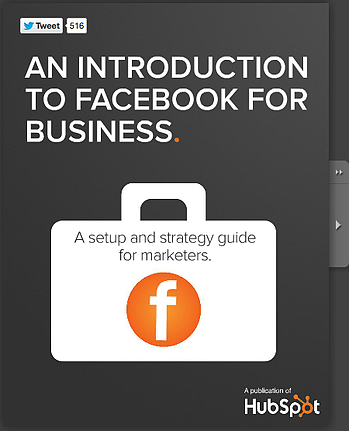
4) Images and Illustrations
An essential part of any great e-book is the illustrations and images that you place alongside the text. The imagery needs to support and enhance the textual message that you are trying to convey. The visuals can be anything from charts, graphs, screen-shots, illustrations, pictures, and small infographics. The reason that this is so important is because the brain processes images and pictures 30,000 times faster than it processes text.
This concept is vital because not every person that downloads your e-book is going to study the content. Some will scan it for the main points, some will casually read it, and some will study it in detail. The pictures that you select will help this first group of people that want to scan the information and extract the main points.
Finally, these visual elements will help keep the reader engaged, support your message, and give real, tangible examples of the concepts that you are trying to explain. Do your best to try to incorporate an image on each page of your e-book.
A good example of visual imagery utilization is the Content Marketing Institute in their e-book 100 Content Marketing Examples. You will notice that they use a visual element on almost every page of the e-book, and additionally, they constantly vary their visuals. For example, just to name a few, they have a picture of the author, website screenshots, and an infographic.
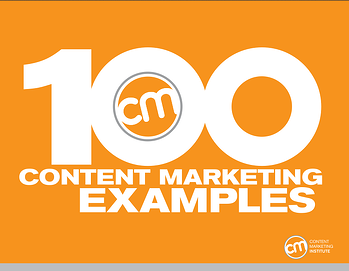
5) Writing Style
The last element for a sexy e-book is using the right tone of voice. For an e-book to be desirable to your audience, you need it to be in the proper writing style. Remember that you are trying to build thought leadership, trust and credibility with your audience.
To do this effectively, you need to make sure that you use an informative but also entertaining tone. Writing about industry topics, if not done correctly, can be boring, so it’s your job to make sure this doesn’t happen.
Write in a conversational tone, like you are writing to your peers. Use stories from your own life or your customers’ lives to solidify the concepts that you are trying to convey. Be relatable and human in your tone, and let your worldview and attitude bleed into your writing style. This will better allow your readers to connect and engage with you as a person.
A great example of an informative, respectful and collegial writing style can be found in Jonathan Kranz’s The E-book E-book.
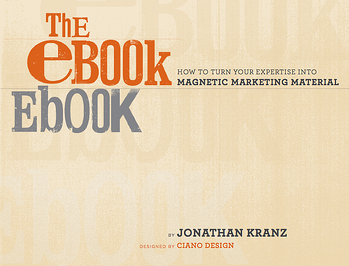
What Ebooks do you find especially effective? Why? Share your thoughts in the comments section below!
